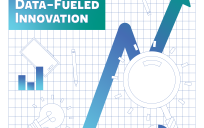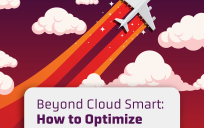This blog is an excerpt from our new GovLoop Academy course created in partnership with NetApp, Harnessing the Power of Genomics to Advance Healthcare. Take the course here.
Have you ever wondered why different treatment and prevention plans work for some patients but not for others? Why there is no one cure-all when it comes to medicine?
It’s because small differences – including genes, environment, and lifestyle – make each of us unique and demand an individualized, precise approach to medicine.
Until recently, this personalized kind of treatment was out of reach for most people, too expensive, and nearly impossible to accomplish at scale. But the growing use of genomic data in patient care is changing that.
Genomic data refers to the genome and DNA data of an organism. This data is used in bioinformatics for collecting, storing and processing the genomes of living things.
Today, genomic data is being used for rare disease diagnosis; for cancer detection; for the tracking of mutations; and for medication and treatment plan selection for patients.
With the advent of human-genome sequencing, healthcare providers are looking for more ways to personalize the care they administer to patients. When providers can access patient sequence results quickly, analyze the data, and then provide a custom care plan—or even custom medication— it increases the opportunity for successful treatment.
But taking advantage of all that genomic data can offer comes with a significant set of challenges. Genomic data generally requires a large amount of storage and purpose-built software to analyze. In fact, geneticists predict that it will require up to 40 exabytes of storage to sequence the predicted 100 million to 2 billion human genomes anticipated by 2025. Rapid retrieval and analysis of this data is an additional issue – taxing the performance of the database system used by most electronic health records.
This growth, particularly in federal genomics programs and data repositories, will continue to increase these challenges while providing opportunities. The NIH recently introduced the STRIDES program, which will help organizations to increase the sharing of genomic data. Another new NIH program is called “All-of-US”, which has an objective of collecting DNA samples and medical history information from a million volunteers.
Among the other serious challenges facing genomic data management are:
- The size of files. A whole- genome sequencing can be as massive as 100 gigabytes.
- The volume of files. New sequencers can generate in excess of 1 terabyte per day; and the total volume of genomic data more than doubles every year.
- (and) Complexity. Government regulations around data security and privacy may complicate how genomic data is generated, used, shared and stored.
Given all these challenges, how can healthcare organizations make use of genomic data to create personalized treatment?
Cloud computing will be one key mechanism for helping to manage, share and store the massive file sets of data involved in ingesting genomic data into electronic health records and clinical information systems.
To learn more, take our 10-minute, self-paced GovLoop Academy course, here.






Leave a Reply
You must be logged in to post a comment.